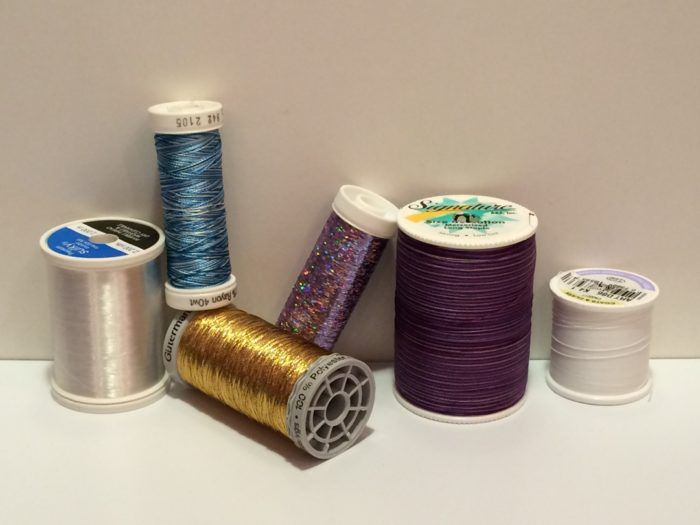
The thread varieties shown are sold at most fabric stores and include the following brands: Sulky, Gütermann, Signature, and Coats & Clark.
When starting a new sewing project, a lot of us select the pattern, then the fabric, and finally, find a spool of thread that precisely matches the chosen fabric color. Where’s the fun in that? The truth is, there are hundreds of thread types that could elevate a project to the next level. Some thread types that are widely available and worth considering include: variegated cotton, multicolor rayon, metallic, holoshimmer metallic, glow-in-the-dark, and invisible. Below, I’ll discuss these varieties and provide some tips for using them on your next project.
1. Variegated cotton thread
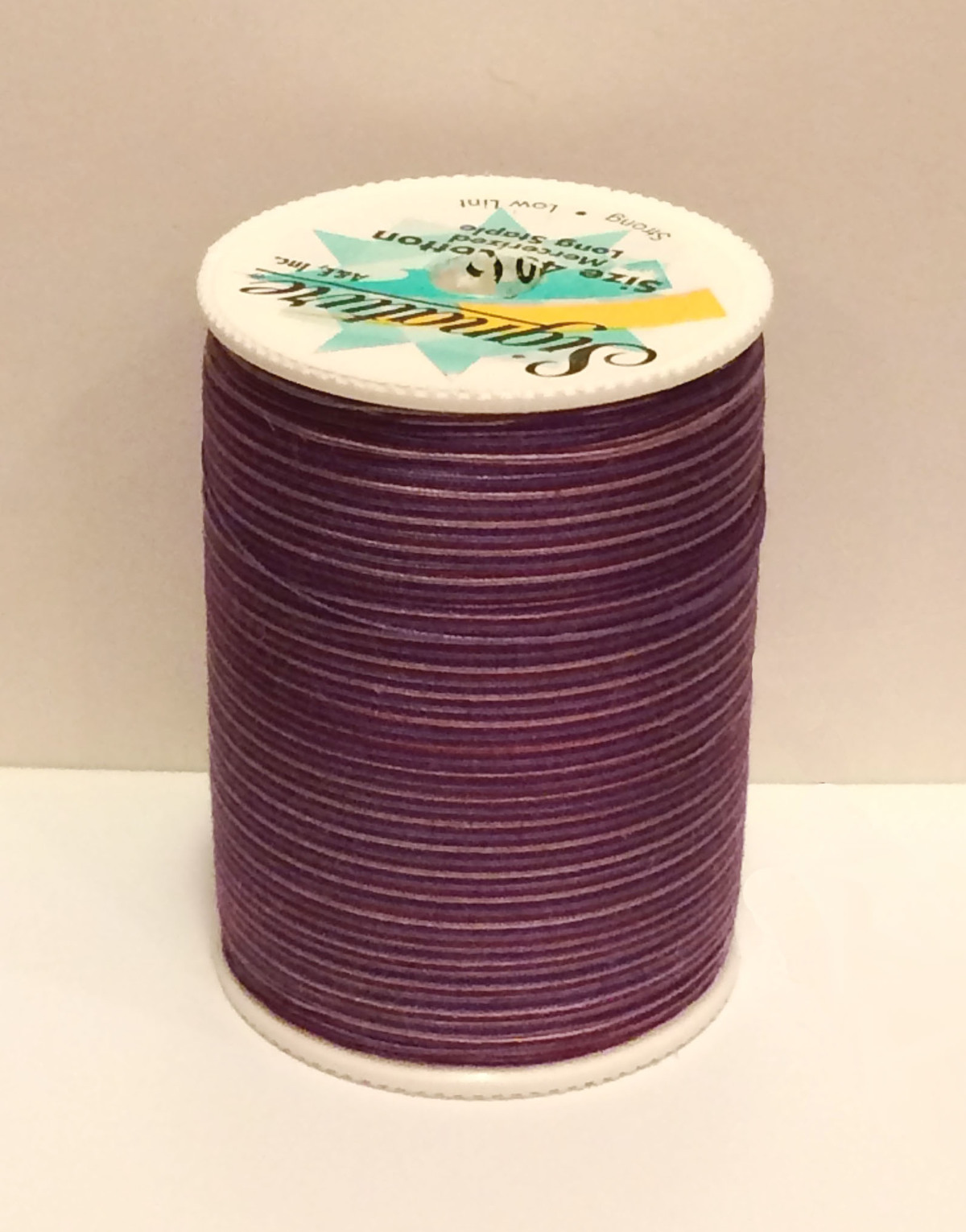
This multicolored thread adds beautiful color combinations to sewing projects.
Variegated cotton thread is nearly identical to traditional cotton sewing thread. The only difference is that its color changes every few inches. This enables you to create unique, colorful designs on a variety of projects with little effort. While this thread type can be used on multicolored fabric, it shows up best on contrasting solid-colored fabric.
Common thread uses: quilting, topstitching, embroidery, decorative stitching, and appliqué.
Suggested needle types: 90/14 Quilting, or refer to the needle type indicated on the thread spool.
 Look how quickly the thread color changes on this variegated machine-embroidery stitch.
Look how quickly the thread color changes on this variegated machine-embroidery stitch.
2. Multicolor rayon thread
 This thread type is most often used in machine embroidery.
This thread type is most often used in machine embroidery.
Although it may look similar, multicolor rayon thread is smoother and more lustrous than variegated cotton thread. It is also stronger than cotton and silk threads of the same weight. It doesn’t require any special tools or machine adjustments to make gorgeous designs such as the one shown below.
Common thread uses: quilting, topstitching, embroidery, decorative stitching, appliqué, and buttonholes.
Suggested needle types: 80/12 Universal, 90/14 Embroidery, or refer to the needle type indicated on the thread spool.
 This decorative machine stitch creates a beautiful gradation.
This decorative machine stitch creates a beautiful gradation.
3. Metallic thread

Metallic thread is extremely smooth, strong, and pliable. It is easy to use and provides a great accent to any decorative design. For best results, slightly loosen the top thread tension, use a lightweight thread in the bobbin, and avoid creating small stitches.
Common thread uses: quilting, topstitching, embroidery, and accent stitching.
Suggested needle types: 90/14 Metallic, 90/14 Topstitch, or refer to the needle type indicated on the thread spool.
 The metallic specks shine through on this basic machine stitch.
The metallic specks shine through on this basic machine stitch.
4. Holoshimmer metallic thread

This radiant thread from Sulky creates exquisite designer details.
Holoshimmer metallic thread has similar properties to metallic thread. However, its makeup is slightly different. Whereas most threads are produced by twisting two fibers together, holoshimmer thread is composed of a thin, flat, ribbon-like foil that is laminated with polyester to create this stunning reflective effect. To properly sew with this thread, place the spool in the vertical spool pin, significantly lower the top thread tension, use a lightweight thread in the bobbin, and avoid creating small stitches.
Common thread uses: quilting, topstitching, embroidery, and accent stitching.
Suggested needle types: 90/14 Metallic, 90/14 Topstitch, or refer to the needle type indicated on the thread spool.

5. Glow-in-the-dark thread

In addition to animating Halloween costumes, this product is great for accenting decorative pillows, promotional items, and exercise apparel.
This 100-percent polyester glow-in-the-dark thread can be a fun add-on to any project. Depending on the manufacturer, this thread’s glow can last for up to 20 minutes after the lights are turned off. Better yet, no special sewing tools are required. Just be sure to use a cool iron, if needed, to prevent the thread from melting.
Common thread uses: quilting, topstitching, embroidery, and appliqué.
Suggested needle types: 80/12 Universal, or refer to the needle type indicated on the thread spool.

Appliqué cute shapes to accessories or garments with this thread to make the edges glow in the dark.
6. Invisible thread

If you are having a hard time finding thread that matches multiple fabric colors, invisible thread is a fantastic alternative. It even comes in two shades to make things easier. The clear option is for light-colored fabrics, while the smoke color is meant for use with dark-colored fabrics. For best sewing results, place the invisible thread spool in the vertical spool pin and loosen the top thread tension. You also can use invisible thread in the bobbin if you wind it slowly. Be sure to loosen the bobbin’s tension as well.
Common thread uses: quilting, appliqué, couching, stitching in the ditch, and hemming.
Suggested needle types: 70/10 Microtex Sharp Needle, 75-90 Topstitch needle, or refer to the needle type indicated on the thread spool.
 Notice how hard it is to detect the invisible thread as it zigzags over the red cord.
Notice how hard it is to detect the invisible thread as it zigzags over the red cord.


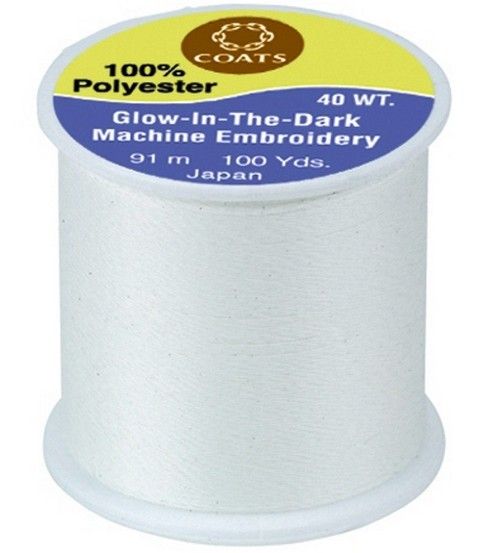
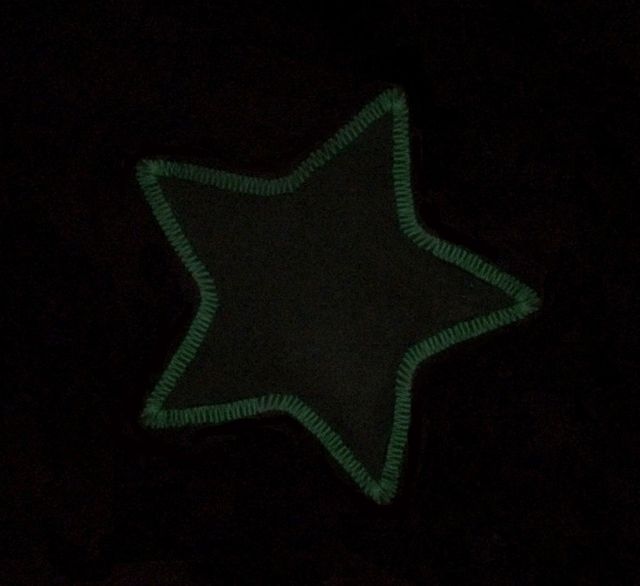

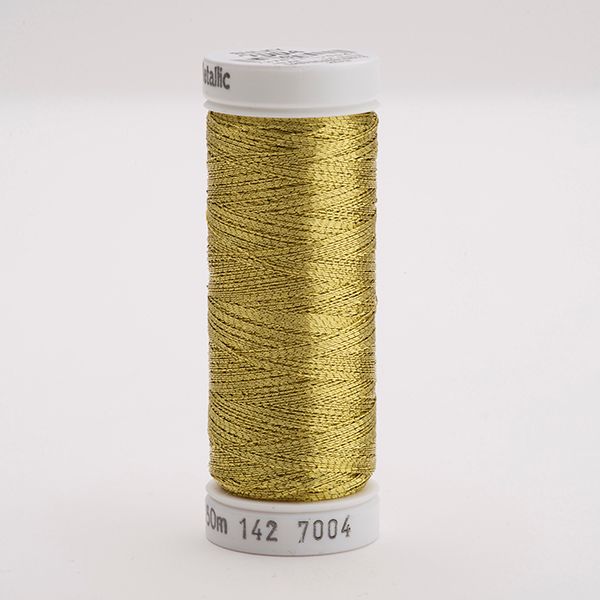
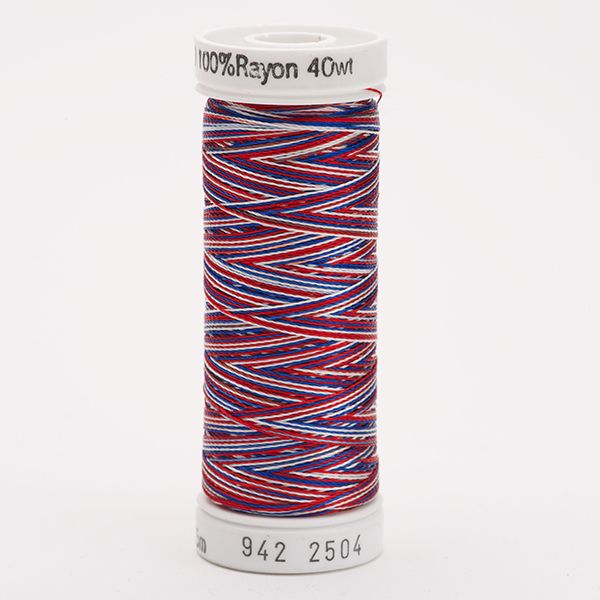
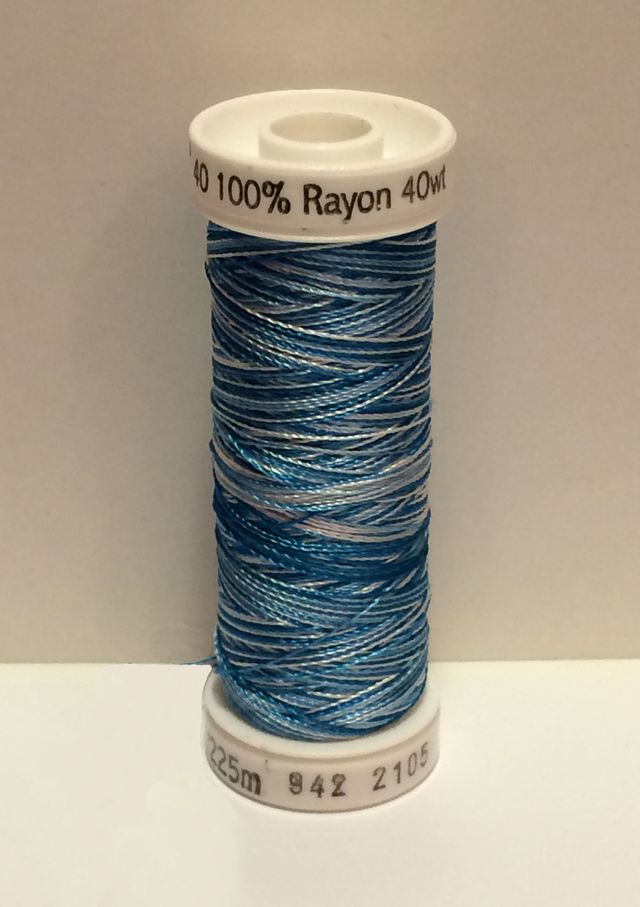
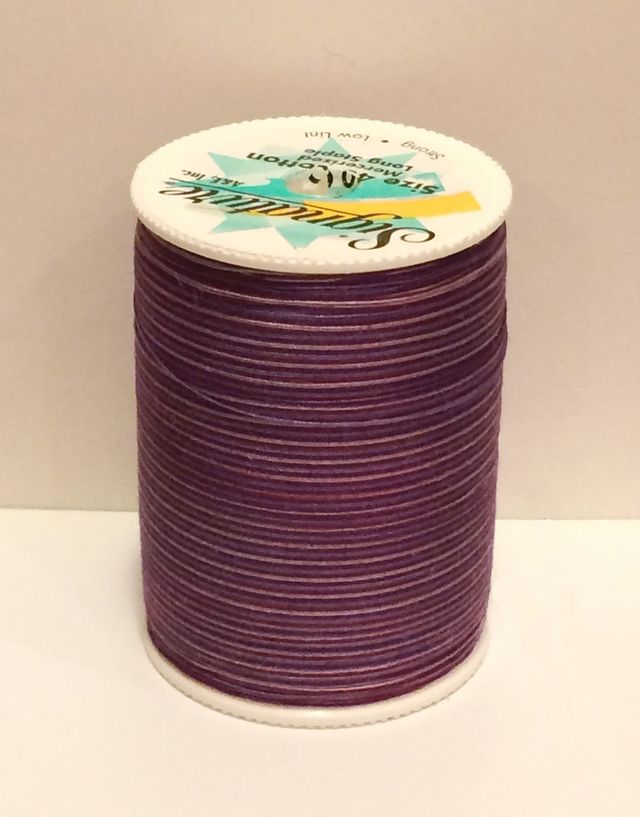
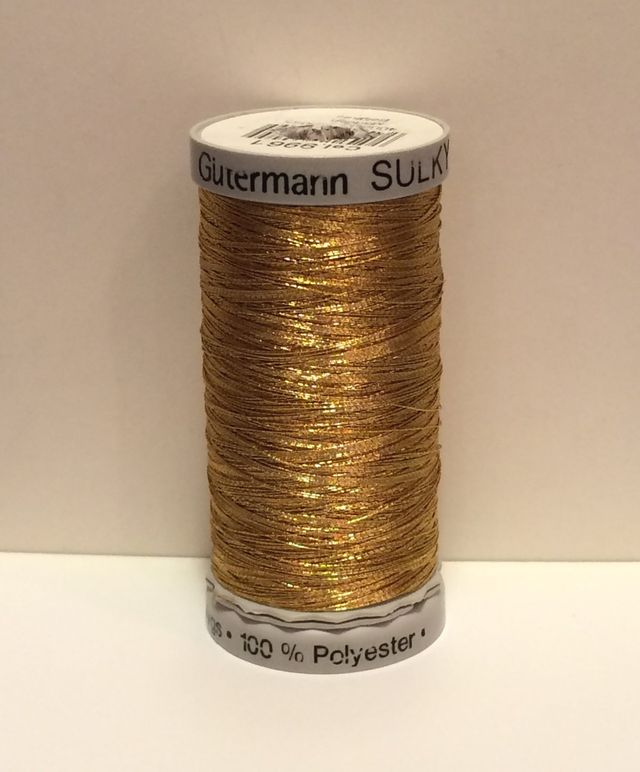
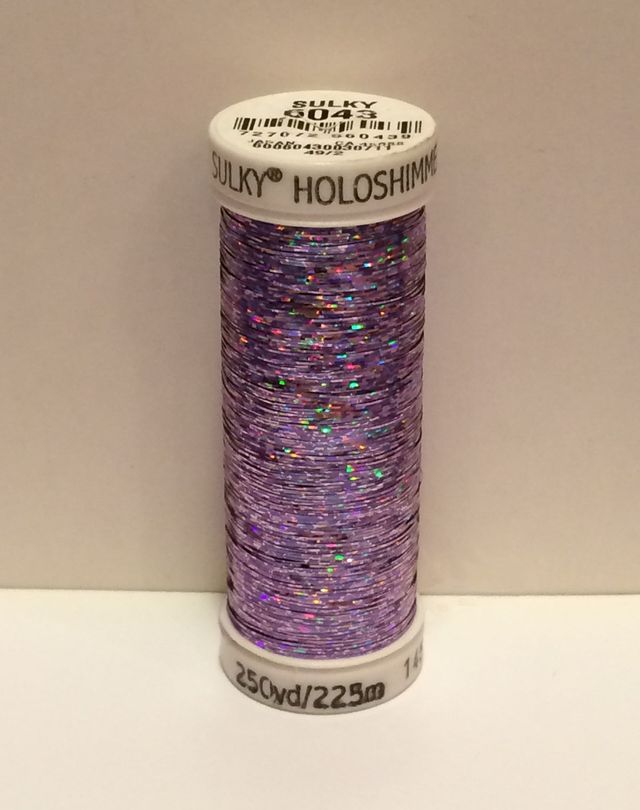

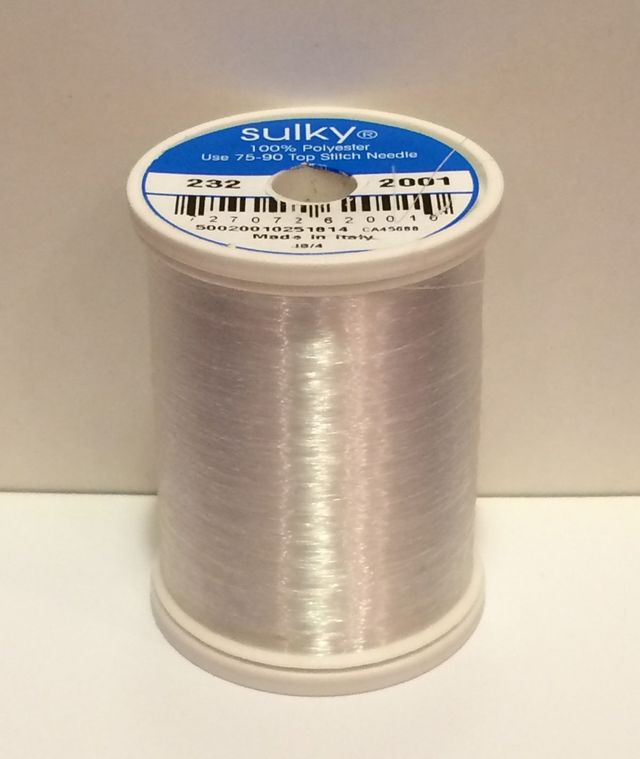
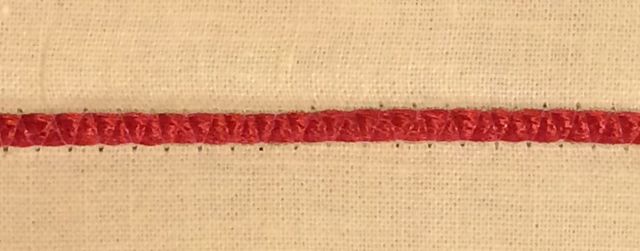



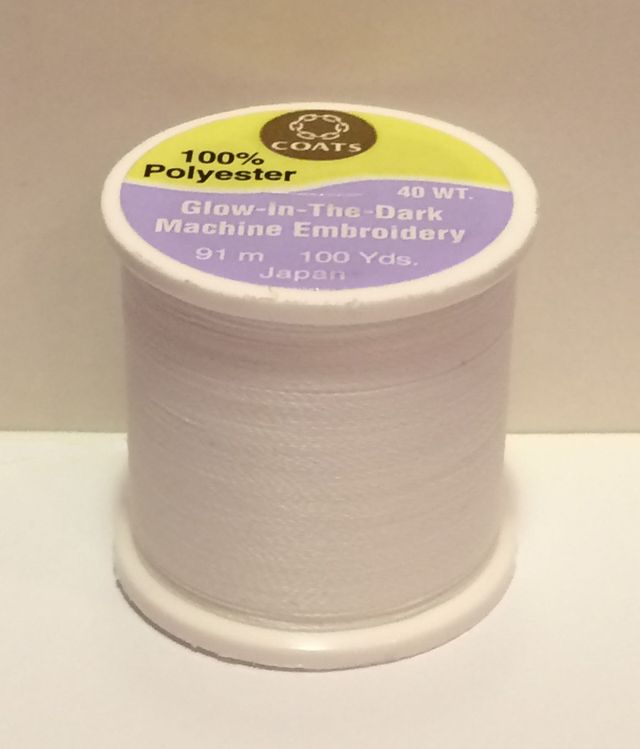
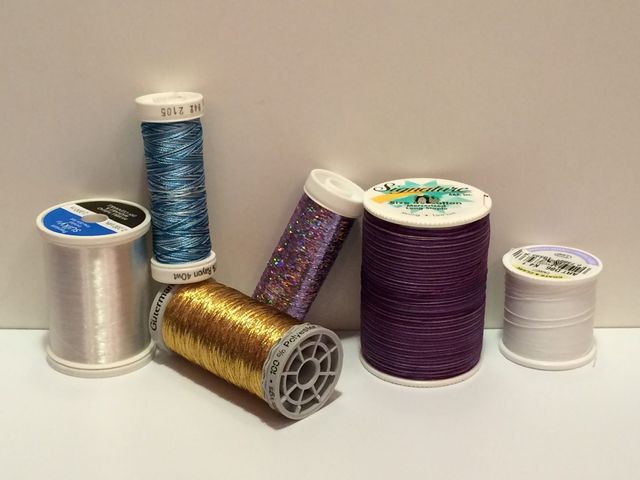
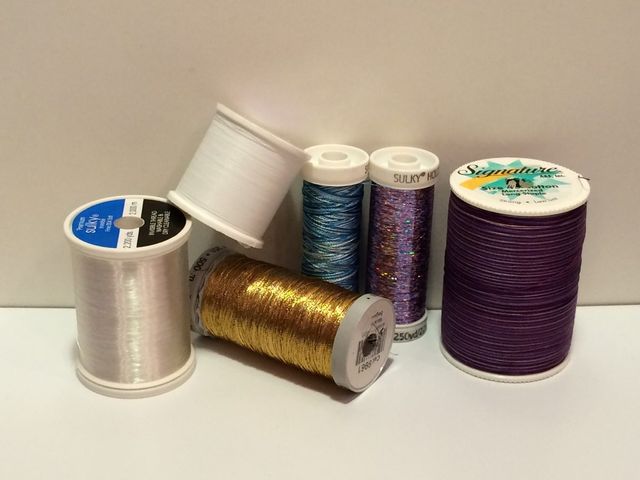
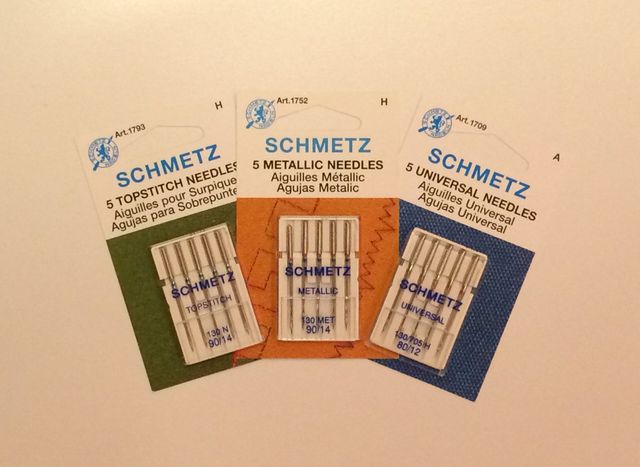

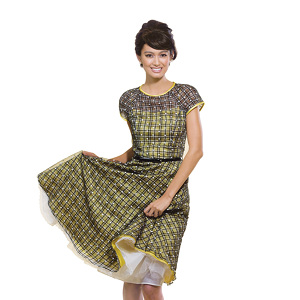

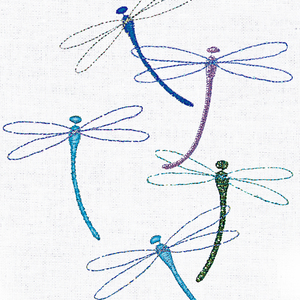


























Does button-hole thread go into the bobbin only? I want a super sturdy button hole and am not sure where to use this type of heavy thread. Thanks!